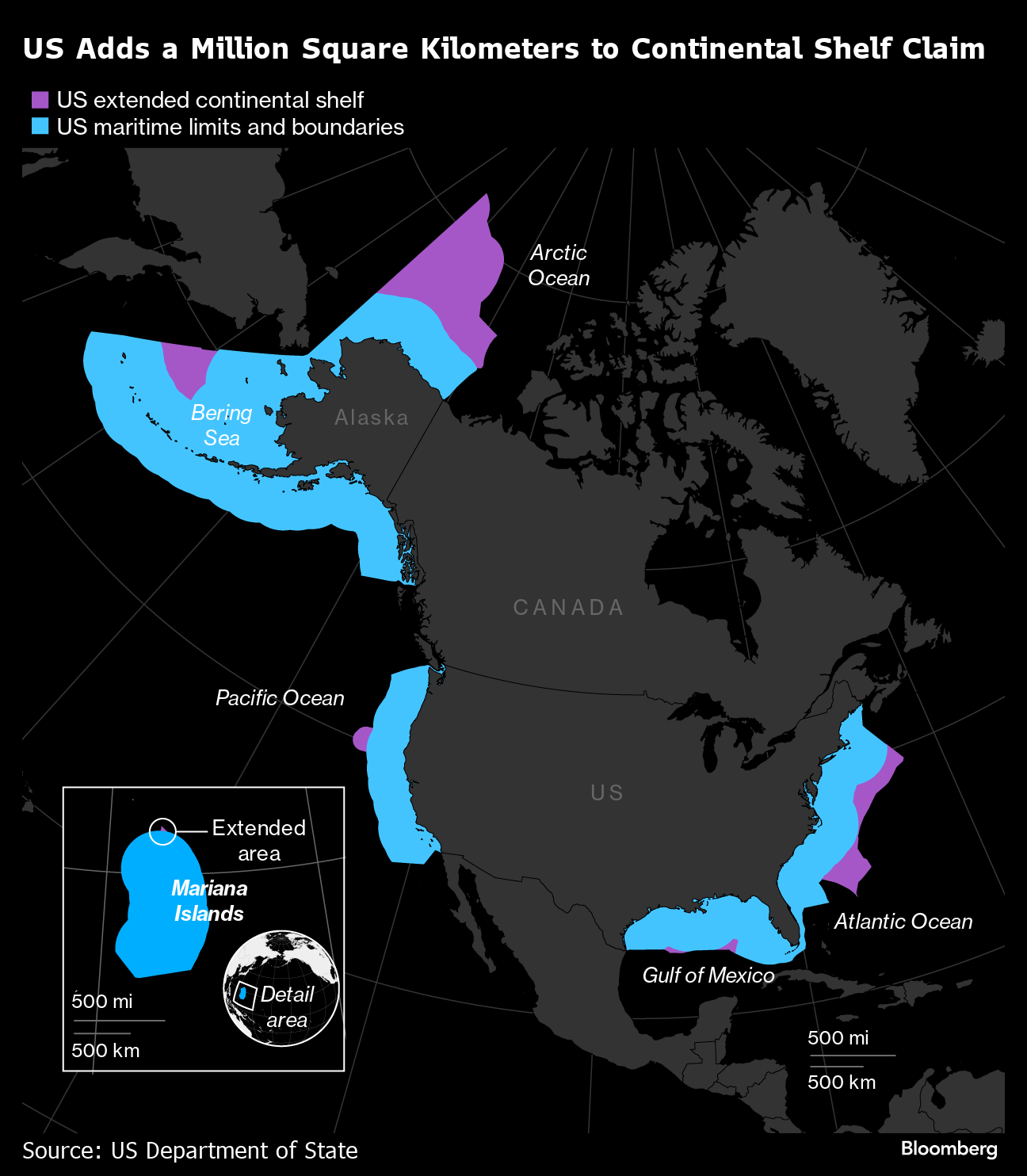US Claims Huge Portion of Seabed in Strategic Resource Push

By Danielle Bochove
The US has expanded its claims on the ocean floor, securing rights to potentially resource-rich seabeds. The Extended Continental Shelf, which spans approximately 1 million square kilometers, covers areas in the Arctic and Bering Sea. This region holds increasing strategic importance and is also the subject of claims by Canada and Russia. The US has also announced the boundaries of the shelf in the Atlantic, Pacific, and Gulf of Mexico.
The recent announcement marks the mapping of the outer limits of the US continental shelf, granting the country sovereignty over the seabed floor. This includes rights to seabed mining, oil and gas leasing, and other activities. The development is a significant milestone, as the US seeks to secure critical minerals necessary for future technologies amid mounting concerns about national security.
The US State Department emphasizes that the expansion is about establishing geographical boundaries, rather than exploiting resources. Continued mapping and exploration will be essential to understand the environmental impact and resource potential of these areas.
While the exact resource potential remains uncertain, the extended continental shelf holds 50 hard minerals, including lithium and tellurium, as well as 16 rare earth elements. These resources are crucial for key industries such as electric vehicles and renewable energy projects. However, there are competing interests in protecting the fragile Arctic environment, particularly as climate change accelerates the region's development.
Resource Potential
The US continental shelf is estimated to contain about 90 billion barrels of undiscovered oil and 1,670 trillion cubic feet of gas, along with critical metals needed for electrification. However, much of this estimate is based on land studies, and the offshore potential remains largely unexplored.
Over half of the extended continental shelf extends in a large wedge north of Alaska towards the Arctic Ocean, overlapping with Canadian claims. Another significant portion lies in the Bering Sea, falling within the US side of the maritime boundary between Alaska and Russia. The establishment of outer limits in the Arctic will depend on delimitation with Canada.
Law of the Sea
The 1982 United Nations Convention on the Law of the Sea governs maritime zones. While the US is not a party to the convention, it recognizes the right of countries to resources on or below the seabed floor where their continental shelf extends. However, the seas above remain international waters. Russia, Denmark, and Canada have been waiting for their overlapping Arctic seabed claims to be reviewed by the Commission on the Limits of the Continental Shelf.
The US acknowledges the need to establish future maritime boundaries with Canada, the Bahamas, and Japan due to overlapping claims. The Biden administration supports joining the convention and adheres to the same rules for determining the extended continental shelf. The decision to unilaterally delineate the continental shelf may draw criticism from other countries and reduce the likelihood of the US ratifying the convention.
© 2023 Bloomberg L.P.

